Assessing Human Vulnerability to Urban Flood in Southern Sardinia (IT)
Abstract
1. Introduction
2. Materials and Methods
2.1. Mapping Urban Flood Vulnerability
- Shorter return times (frequent and rapid phenomena);
- Different spatial representation (larger scale on limited map);
- The presence of obstacles and complex elevation trends do not allow a prevailing direction of flow.
- Toppling mechanism;
- Complex velocity profile and forces acting on the human body;
- Bed slope conditions;
- Body shape characteristics;
- Bias of controlled laboratory conditions.
2.2. Area of Study
2.3. Numerical Model Application to Solanas Flood
- Hydrological model of inflow–runoff transformation for the determination of runoff (net rainfall hyetograph with leak assessment) for reference rainfall events (gross rainfall from rainfall probability curves or historical rainfall grams);
- Hydraulic model for the study of surface current propagation by solving two-dimensional equations characterizing shallow water equation model—SWE—flow for underground and surface drainage.
3. Results
Flood Vulnerability Index Comparison
4. Discussion
5. Conclusions
Funding
Institutional Review Board Statement
Informed Consent Statement
Data Availability Statement
Conflicts of Interest
References
- Degeai, J.-P.; Blanchemanche, P.; Tavenne, L.; Tillier, M.; Bohbot, H.; Devillers, B.; Dezileau, L. River flooding on the French Mediterranean coast and its relation to climate and land use change over the past two millennia. Catena 2022, 219, 106623. [Google Scholar] [CrossRef]
- Taillandier, F.; Taillandier, P.; Brueder, P.; Brosse, N. The dynamic sketch map to support reflection on urban flooding. Int. J. Disaster Risk Reduct. 2025, 116, 105121. [Google Scholar] [CrossRef]
- Grimaldi, S.; Petroselli, A.; Serinaldi, F. A continuous simulation model for design-hydrograph estimation in small and ungauged watersheds. Hydrol. Sci. J. 2012, 57, 1035–1051. [Google Scholar] [CrossRef]
- Grimaldi, S.; Nardi, F.; Piscopia, R.; Petroselli, A.; Apollonio, C. Continuous hydrologic modelling for design simulation in small and ungauged basins: A step forward and some tests for its practical use. J. Hydrol. 2021, 595, 125664. [Google Scholar] [CrossRef]
- Apel, H.; Aronica, G.T.; Kreibich, H.; Thieken, A.H. Flood risk analyses—How detailed do we need to be? Nat. Hazards 2009, 49, 79–98. [Google Scholar] [CrossRef]
- Mark, O.; Weesakul, S.; Apirumanekul, C.; Aroonnet, S.B.; Djordjević, S. Potential and limitations of 1D modelling of urban flooding. J. Hydrol. 2004, 299, 284–299. [Google Scholar] [CrossRef]
- Teng, J.; Jakeman, A.J.; Vaze, J.; Croke, B.F.W.; Dutta, D.; Kim, S. Flood inundation modelling: A review of methods, recent advances and uncertainty analysis. Environ. Model. Softw. 2017, 90, 201–216. [Google Scholar] [CrossRef]
- Horritt, M.S.; Bates, P.D. Evaluation of 1D and 2D numerical models for predicting river flood inundation. J. Hydrol. 2002, 268, 87–99. [Google Scholar] [CrossRef]
- Fathi, M.M.; Liu, Z.; Fernandes, A.M.; Hren, M.T.; Terry, D.O.; Nataraj, C.; Smith, V. Spatiotemporal flood depth and velocity dynamics using a convolutional neural network within a sequential Deep-Learning framework. Environ. Model. Softw. 2025, 185, 106307. [Google Scholar] [CrossRef]
- Ignacio, J.A.F.; Cruz, G.T.; Nardi FHenry, S. Assessing the effectiveness of a social vulnerability index in predicting heterogeneity in the impacts of natural hazards: Case study of the Tropical Storm Washi flood in the Philippines. Vienna Yearb. Popul. Res. 2015, 13, 91–129. Available online: https://www.jstor.org/stable/24770027 (accessed on 20 December 2024).
- Mudashiru, R.B.; Sabtu, N.; Abustan, I.; Balogun, W. Flood hazard mapping methods: A review. J. Hydrol. 2021, 603 Pt A, 126846. [Google Scholar] [CrossRef]
- Dimitriadis, P.; Tegos, A.; Oikonomou, A.; Pagana, V.; Koukouvinos, A.; Mamassis, N.; Koutsoyiannis, D.; Efstratiadis, A. Comparative evaluation of 1D and quasi-2D hydraulic models based on benchmark and real-world applications for uncertainty assessment in flood mapping. J. Hydrol. 2016, 534, 478–492. [Google Scholar] [CrossRef]
- Kohanpur, A.H.; Saksena, S.; Dey, S.; Johnson, J.M.; Riasi, M.S.; Yeghiazarian, L.; Tartakovsky, A.M. Urban flood modeling: Uncertainty quantification and physics-informed Gaussian processes regression forecasting. Water Resour. Res. 2023, 59, e2022WR033939. [Google Scholar] [CrossRef]
- Intergovernmental Panel on Climate Change. Managing the Risks of Extreme Events and Disasters to Advance Climate Change Adaptation; Cambridge University Press: Cambridge, UK, 2012. [Google Scholar]
- Rufat, S.; Tate, E.; Burton, C.G.; Maroof, A.S. Social vulnerability to floods: Review of case studies and implications for measurement. Int. J. Disaster Risk Reduct. 2015, 14, 470–486. [Google Scholar] [CrossRef]
- Tang, Z.; Wang, P.; Li, Y.; Sheng, Y.; Wang, B.; Popovych, N.; Hu, T. Contributions of climate change and urbanization to urban flood hazard changes in China’s 293 major cities since 1980. J. Environ. Manag. 2024, 353, 120113. [Google Scholar] [CrossRef]
- Kaiser, Z.A.; Akter, F. From risk to resilience and sustainability: Addressing urban flash floods and waterlogging. Risk Sci. 2025, 1, 100011. [Google Scholar] [CrossRef]
- Assembly, G. Sustainable development goals. SDGs Transform. Our World 2015, 2030, 6–28. [Google Scholar]
- Johns, C.M. Understanding barriers to green infrastructure policy and stormwater management in the City of Toronto: A shift from grey to green or policy layering and conversion? J. Environ. Plann. Manag. 2019, 62, 1377–1401. [Google Scholar] [CrossRef]
- Jato-Espino, D.; Charlesworth, S.M.; Bayon, J.R.; Warwick, F. Rainfall-runoff simulations to assess the potential of SuDS for mitigating flooding in highly urbanized catchments. Int. J. Environ. Res. Public Health 2016, 13, 149. [Google Scholar] [CrossRef] [PubMed]
- Sulis, A.; Altana, M.; Sanna, G. Assessing Reliability, Resilience and Vulnerability of Water Supply from SuDS. Sustainability 2024, 16, 5391. [Google Scholar] [CrossRef]
- MIKE + 2D Manual. User Manual. DHI Technical Report. 2023. Available online: https://www.dhigroup.com/technologies/mikepoweredbydhi/downloads-and-support (accessed on 20 December 2024).
- UNDRR. Human Cost of Disasters, Human Cost of Disasters. An Overview of the Last 20 Years 2000–2019. 2020. Available online: https://www.un-ilibrary.org/content/books/9789210054478 (accessed on 20 December 2024).
- Arrighi, C.; Pregnolato, M.; Dawson, R.J.; Castelli, F. Preparedness against mobility disruption by floods. Sci. Total Environ. 2019, 654, 1010–1022. [Google Scholar] [CrossRef]
- Vinet, F. Flood Impacts on Loss of Life and Human Health. In Floods; Vinet, F., Ed.; Elsevier: Amsterdam, The Netherlands, 2017; pp. 33–51. [Google Scholar] [CrossRef]
- Yari, A.; Ostadtaghizadeh, A.; Ardalan, A.; Zarezadeh, Y.; Rahimiforoushani, A.; Bidarpoor, F. Risk factors of death from flood: Findings of a systematic review. J. Environ. Health Sci. Eng. 2020, 18, 1643–1653. [Google Scholar] [CrossRef]
- Kaiser, M.; Günnemann, S.; Disse, M. Spatiotemporal analysis of heavy rain-induced flood occurrences in Germany using a novel event database approach. J. Hydrol. 2021, 595, 125985. [Google Scholar] [CrossRef]
- Agonafir, C.; Lakhankar, T.; Khanbilvardi, R.; Krakauer, N.; Radell, D.; Devineni, N. A review of recent advances in urban flood research. Water Secur. 2023, 19, 100141. [Google Scholar] [CrossRef]
- Musolino, G.; Ahmadian, R.; Falconer, R.A. Comparison of flood hazard assessment criteria for pedestrians with a refined mechanics-based method. J. Hydrol. X 2020, 9, 100067. [Google Scholar] [CrossRef]
- Foster, D.N.; Cox, R. Stability of children on roads used as floodways. Univ. New South Wales Water Res. Lab. Tech. Rep. 1973, 73, 13. [Google Scholar]
- Abt, S.R.; Wittier, R.J.; Taylor, A.; Love, D.J. Human stability in a high flood hazard zone. J. Am. Water Resour. Assoc. 1989, 25, 881–890. [Google Scholar] [CrossRef]
- Jonkman, S.N.; Penning-Rowsell, E. Human Instability in Flood Flows. JAWRA J. Am. Water Resour. Assoc. 2008, 44, 1208–1218. [Google Scholar] [CrossRef]
- Postacchini, M.; Bernardini, G.; D’Orazio, M.; Quagliarini, E. Human stability during floods: Experimental tests on a physical model simulating human body. Saf. Sci. 2021, 137, 105153. [Google Scholar] [CrossRef]
- Chen, Q.; Xia, J.; Falconer, R.A.; Guo, P. Further improvement in a criterion for human stability in floodwaters. J. Flood Risk Manag. 2019, 12, e12486. [Google Scholar] [CrossRef]
- Ramsbottom, D.; Wade, S.; Bain, V.; Hassan, M.; Penning-Rowsell, E.; WIlson, T.; Fernandez, A.; House, M.; Floyd, P. Flood Risk to People: Phase 2. In R&D Technical Report FD, Department for the Environment; Food and Rural Affairs (DEFRA), UK Environment Agency: Bristol, UK, 2006. [Google Scholar] [CrossRef]
- Istituto Superiore per la Protezione e la Ricerca Ambientale. Proposta metodologica per l’aggiornamento delle mappe di pericolosità e di rischio, Proposta metodologica per l’aggiornamento delle mappe di pericolosità e di rischio. ISPRA Manuali E Linee Guid. 2012, 82, 2012. [Google Scholar]
- Piano Stralcio Assetto Idrogeologico (PAI) della Sardegna. Norme Tecniche di Attuazione. Update to 21.11.2024. Norme di Attuazione al PAI—Autorità di Bacino. Available online: https://autoritadibacino.regione.sardegna.it/wp-content/uploads/2023/01/NTA-PAI-2023.pdf (accessed on 15 December 2024).
- Programma Azione Coste della Sardegna. Regione Autonoma della Sardegna. Technical Report. 2013. Available online: www.regione.sardegna.it/documenti/1_274_20140121114459.pdf (accessed on 15 December 2024).
- Sulis, A.; Carboni, A.; Manca, G.; Yezza, O.; Serreli, S. Impacts of climate change on the tourist-carrying capacity at La Playa beach (Sardinia, IT). Estuar. Coast. Shelf Sci. 2023, 284, 108284. [Google Scholar] [CrossRef]
- Cook, A.; Merwade, V. Effect of topographic data, geometric configuration and modeling approach on f lood inundation mapping. J. Hydrol. 2009, 377, 131–142. [Google Scholar] [CrossRef]
- Da Costa, R.T.; Mazzoli, P.; Bagli, S. Limitations Posed by Free DEMs in Watershed Studies: The Case of River Tanaro in Italy. Front. Earth Sci. 2019, 7, 141. [Google Scholar] [CrossRef]
- Zhou, X.; Mou, L.; Ao, T.; Huang, X.; Yang, H. Effect of the spatial resolution of digital terrain data obtained by drone on urban fluvial flood modeling of mountainous regions. Hydrol. Earth Syst. Sci. 2025, 29, 1963–1980. [Google Scholar] [CrossRef]
- Zhou, Z.; Smith, J.A.; Baeck, M.L.; Wright, D.B.; Smith, B.K.; Liu, S. The impact of the spatiotemporal structure of rainfall on flood frequency over a small urban watershed: An approach coupling stochastic storm transposition and hydrologic modeling. Hydrol. Earth Syst. Sci. 2021, 25, 4701–4717. [Google Scholar] [CrossRef]
- Keifer, C.J.; Chu, H.H. Synthetic storm pattern for drainage design. Proc. ASCE J. Hydraul. Div. 1957, 83, 1332.1–1332.25. [Google Scholar] [CrossRef]
- Shrestha, A.; Bhattacharjee, L.; Baral, S.; Thakur, B.; Joshi, N.; Kalra, A.; Gupta, R. Understanding Suitability of MIKE 21 and HEC-RAS for 2D Floodplain Modeling. In World Environmental and Water Resources Congress; American Society of Civil Engineers: Reston, VA, USA, 2020; pp. 237–253. [Google Scholar] [CrossRef]
- Ansarifard, S.; Eyvazi, M.; Kalantari, M.; Mohseni, B.; Ghorbanifard, M.; Moghaddam, H.J.; Nouri, M. Simulation of floods under the influence of effective factors in hydraulic and hydrological models using HEC-RAS and MIKE 21. Discov. Water 2024, 4, 92. [Google Scholar] [CrossRef]
- Cox, R.J.; Shand, T.D.; Blacka, M.J. Australian rainfall and runoff (AR&R). Revision project 10: Appropriate safety criteria for people. Water Res. 2010, 978, 085825-9454. [Google Scholar]
- Martínez-Gomariz, E.; Gómez, M.; Russo, B. Experimental study of the stability of pedestrians exposed to urban pluvial flooding. Nat. Hazards 2016, 82, 1259–1278. [Google Scholar] [CrossRef]
- Li, Q.; Xia, J.; Dong, B.; Liu, Y.; Wang, X. Risk assessment of individuals exposed to urban floods. Int. J. Disaster Risk Reduct. 2023, 88, 103599. [Google Scholar] [CrossRef]
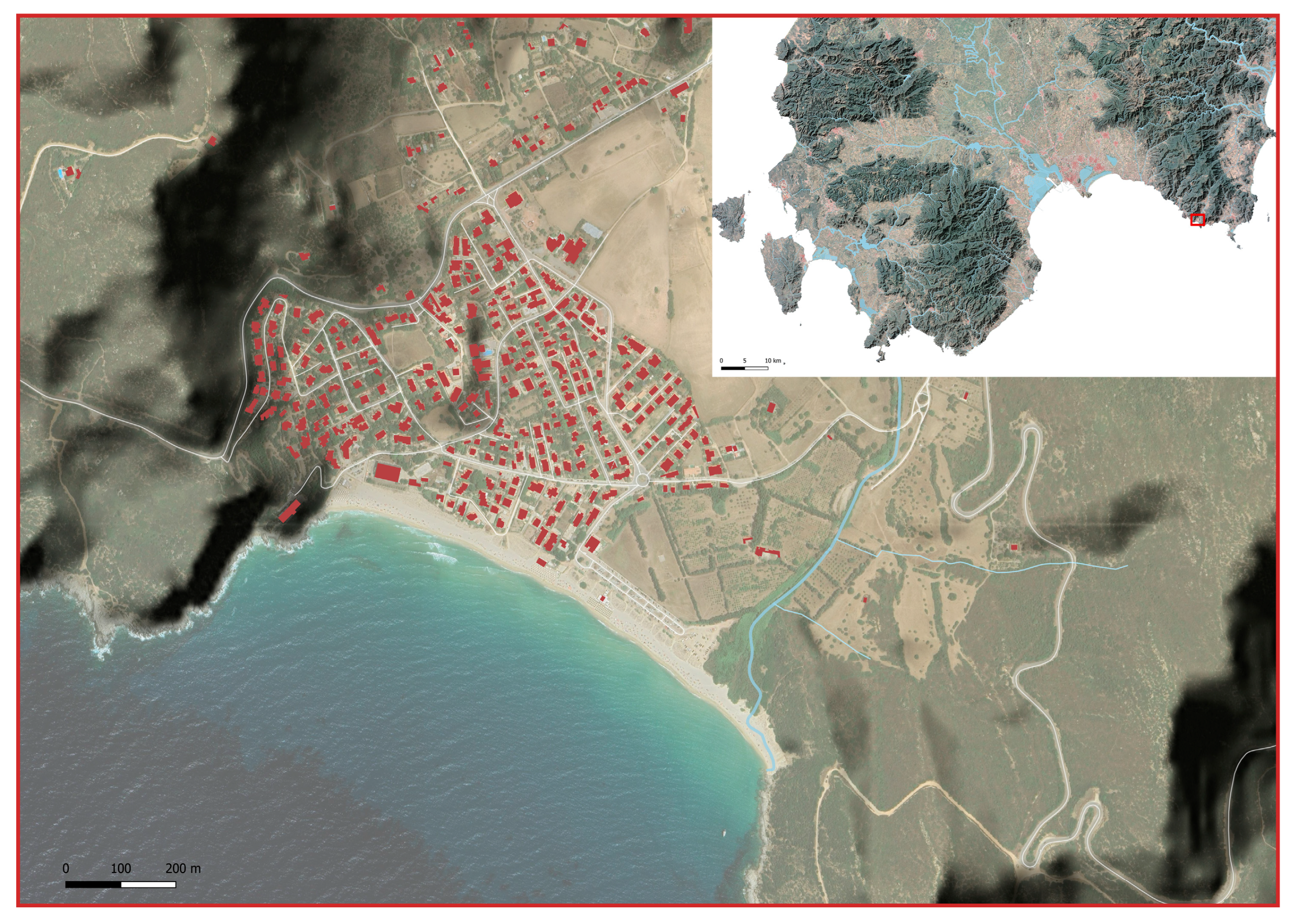
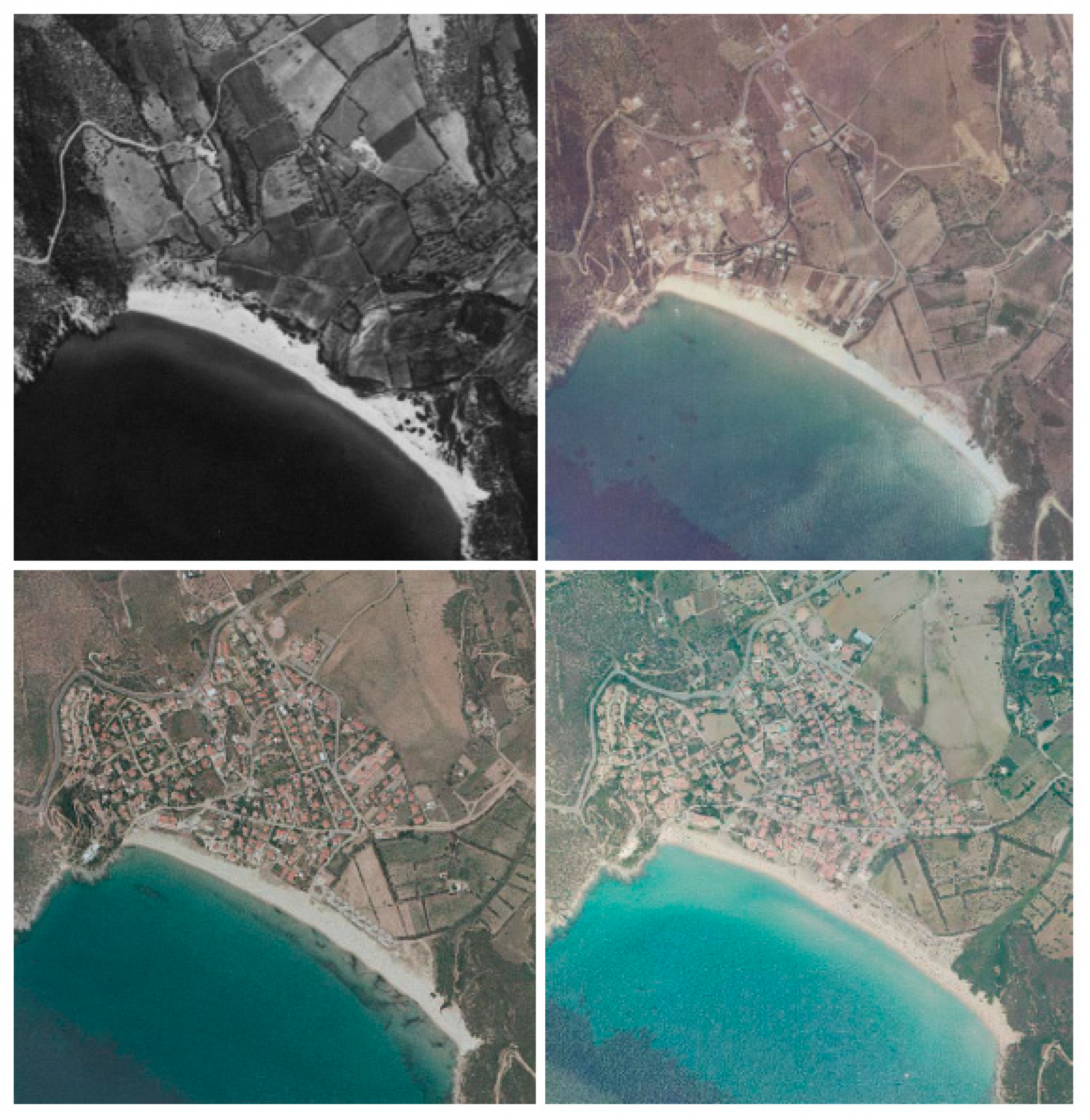

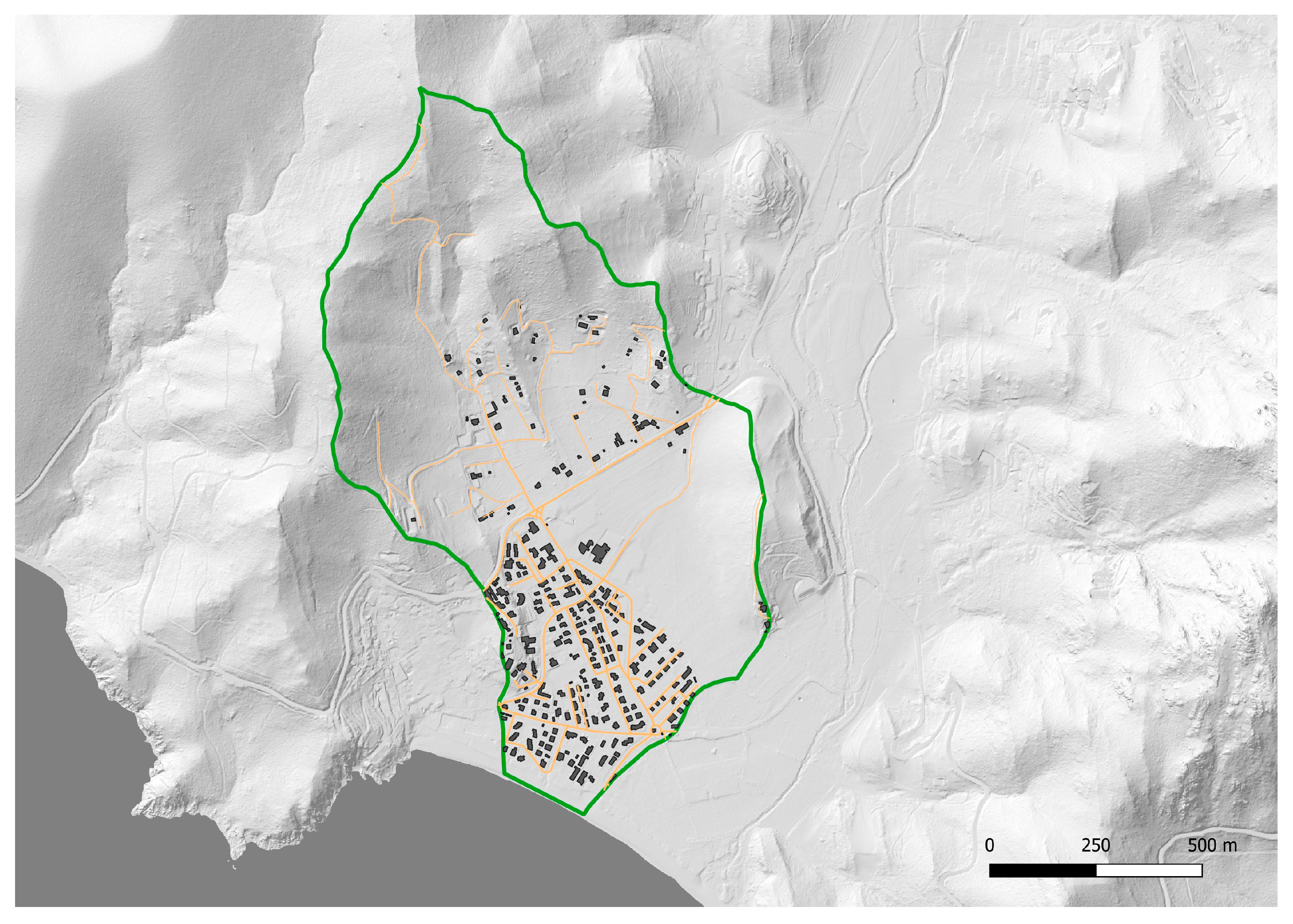

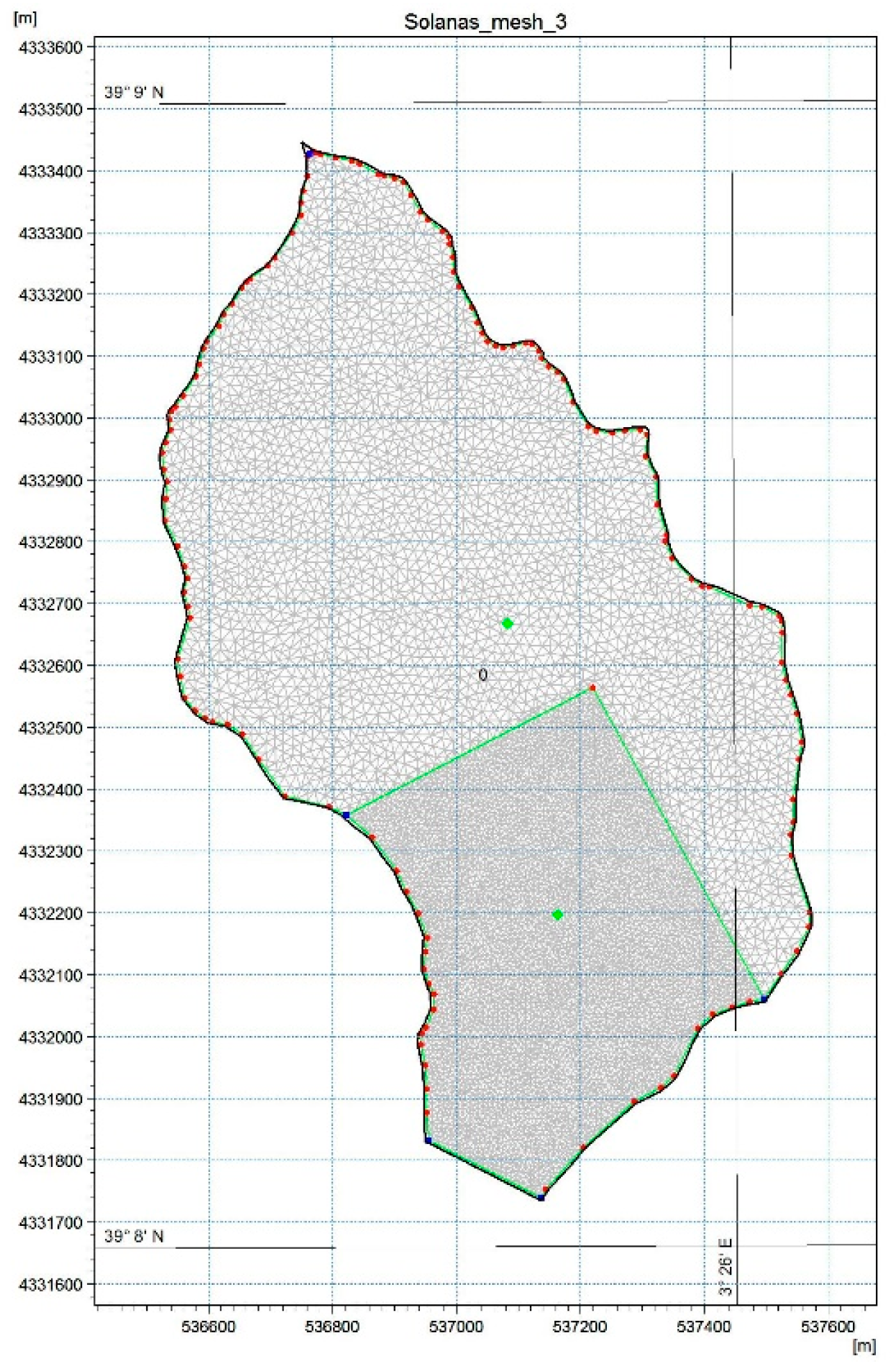
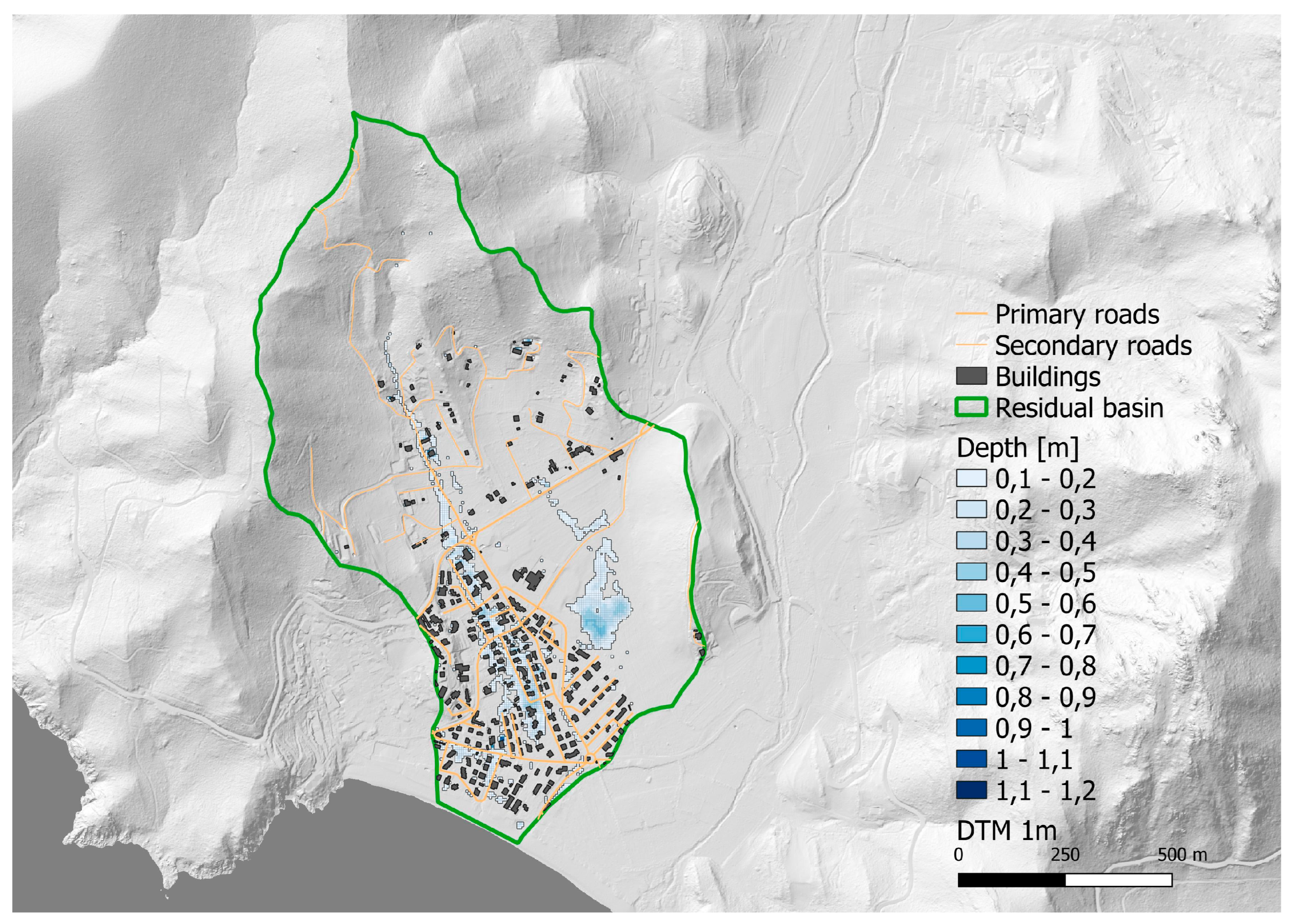
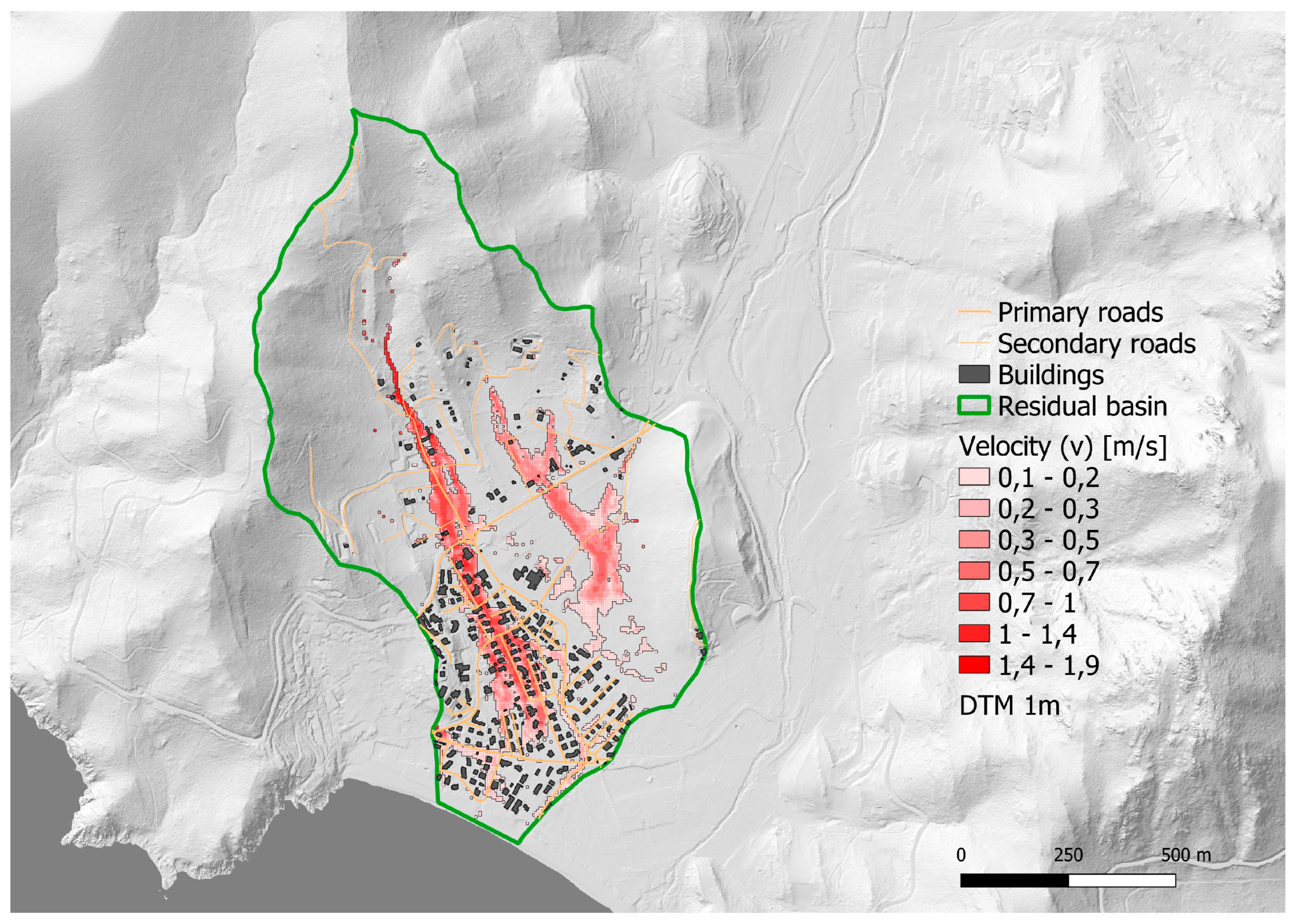

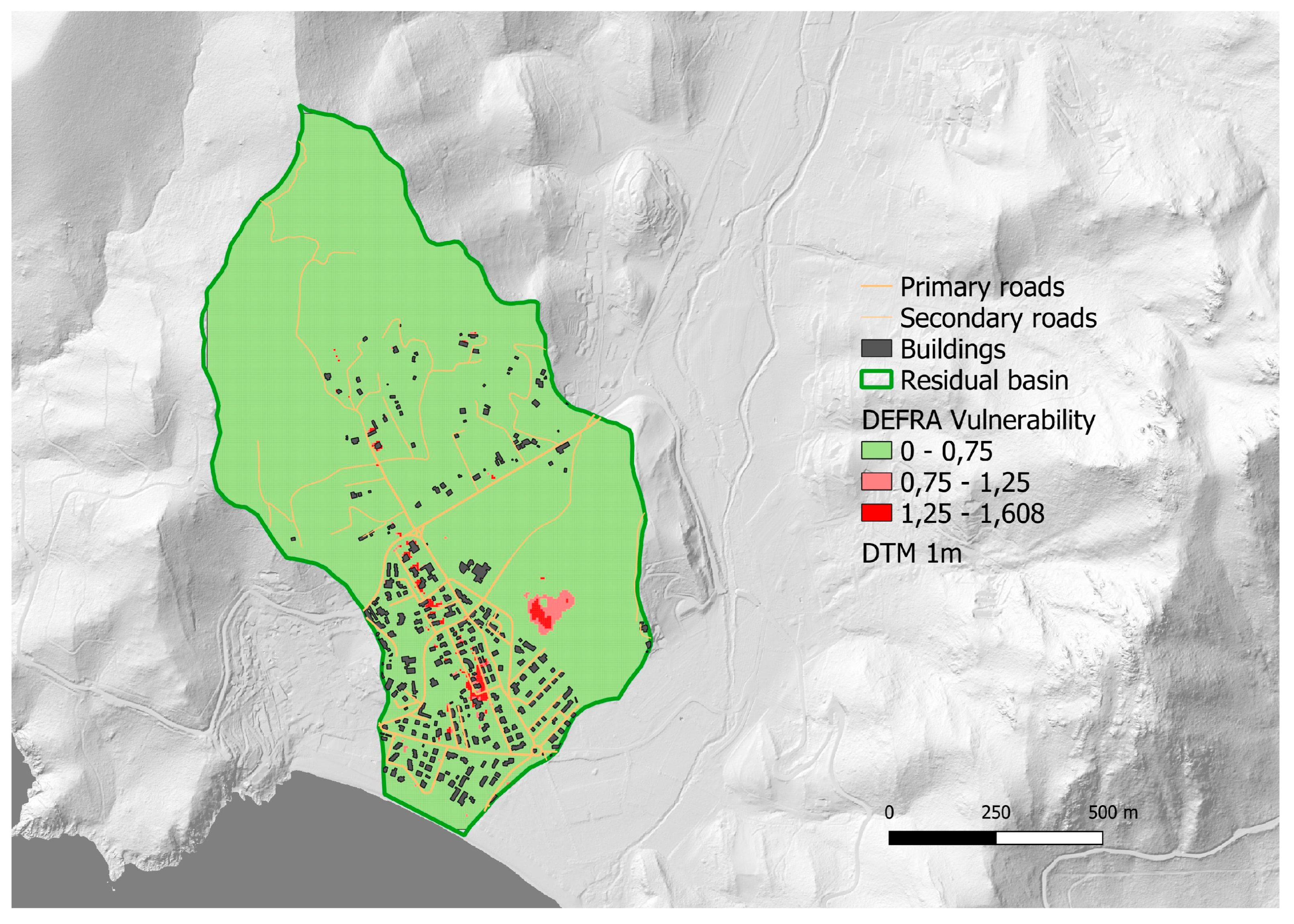
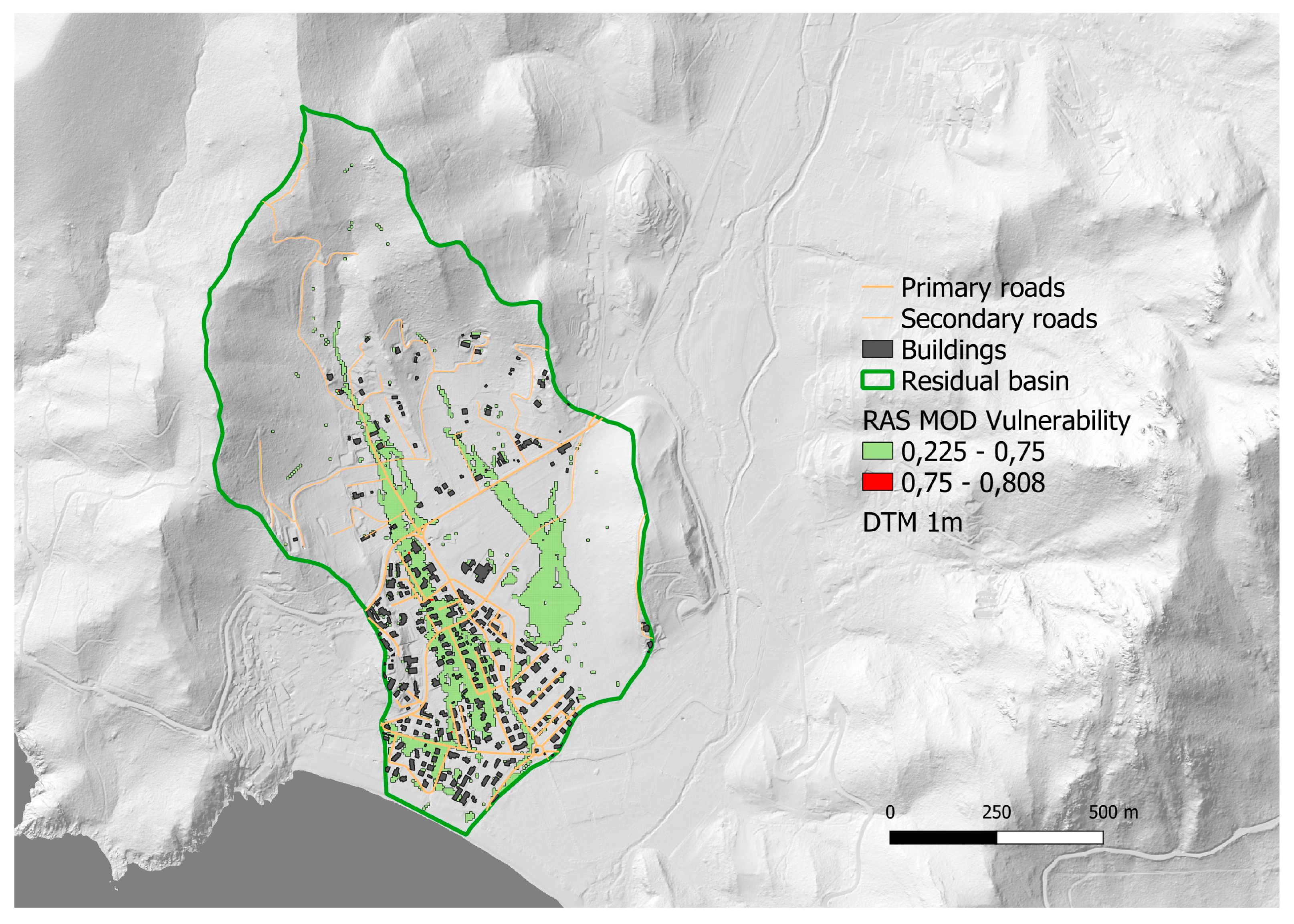
| RAS | DEFRA | |
|---|---|---|
| Area [m2] (A) | 14,925 (1.5%) | 1,020,100 (100%) |
| Vulnerable Area [m2] (AV) | 14,925 (1.5%) | 723,475 (70.9%) |
| Max Vulnerability (MV) | 0.81 | 1.61 |
| Std Dev Vulnerability (SDV) | 0.08 | 0.15 |
| Average Vulnerability (AV) | 0.45 | 0.03 |
| Vp | DEFRA Class | RAS Class |
|---|---|---|
| <0.75 | low | low |
| 0.75–1.0 | moderate | high |
| 1.0–1.25 | ||
| 1.25–2.5 | significant | |
| >2.5 | extreme |
| RAS | RAS_MOD | |
|---|---|---|
| Area [m2] | 14,925 (1.5%) | 97,825 (9.6%) |
| Area with vulnerability [m2] | 14,925 (1.5%) | 97,825 (9.6%) |
| Max Vulnerability | 0.81 | 0.81 |
| Std Dev Vulnerability | 0.08 | 0.09 |
| Average Vulnerability | 0.45 | 0.33 |
Disclaimer/Publisher’s Note: The statements, opinions and data contained in all publications are solely those of the individual author(s) and contributor(s) and not of MDPI and/or the editor(s). MDPI and/or the editor(s) disclaim responsibility for any injury to people or property resulting from any ideas, methods, instructions or products referred to in the content. |
© 2025 by the author. Licensee MDPI, Basel, Switzerland. This article is an open access article distributed under the terms and conditions of the Creative Commons Attribution (CC BY) license (https://creativecommons.org/licenses/by/4.0/).
Share and Cite
Sulis, A. Assessing Human Vulnerability to Urban Flood in Southern Sardinia (IT). Sustainability 2025, 17, 8433. https://doi.org/10.3390/su17188433
Sulis A. Assessing Human Vulnerability to Urban Flood in Southern Sardinia (IT). Sustainability. 2025; 17(18):8433. https://doi.org/10.3390/su17188433
Chicago/Turabian StyleSulis, Andrea. 2025. "Assessing Human Vulnerability to Urban Flood in Southern Sardinia (IT)" Sustainability 17, no. 18: 8433. https://doi.org/10.3390/su17188433
APA StyleSulis, A. (2025). Assessing Human Vulnerability to Urban Flood in Southern Sardinia (IT). Sustainability, 17(18), 8433. https://doi.org/10.3390/su17188433






